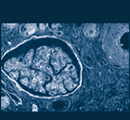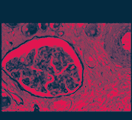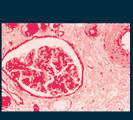
 |
 |
 |


 |
 |
Workshop Sponsored by the Division of Kidney, Urologic and Hematologic Diseases of the National Institute of Diabetes and Digestive and Kidney Diseases, and the Division of Allergy, Immunology, and Transplantation of the National Institute of Allergy and Infectious Diseases, National Institutes of Health, Bethesda, Maryland Over the last decade, the incidence of ESRD has increased at a faster rate than the availability of kidney donors (USRDS 2003 Annual Data Report). As a result, the rate of kidney transplants per 100 patient years on dialysis has declined steadily. Although renal allograft and recipient survivals have also increased during the last decade, over the last several years one-year graft survival and allograft half-life are largely unchanged. Despite effective immunosuppressive strategies that have markedly reduced rates of early allograft failure over time, occurrence of late renal allograft loss remains a significant problem in the transplant patient population. The number of patients returning to dialysis therapy each year has nearly doubled in the last decade, as approximately 4,500 patients with failed transplants restarted dialysis in 2001 (USRDS). Such patients represented approximately 4.7% of the total number of patients starting or restarting dialysis in 2001. Observations from clinical studies suggest that in addition to cellular and humorally-mediated allograft rejection, other non-immunologically-mediated factors likely contribute to progressive loss of kidney function in transplant recipients. Donor factors such as age and cadaveric status, as well as transplant characteristics such as form of preservation and vascular anatomy also contribute to progressive renal dysfunction. In addition, recipient factors such as hypertension, vascular disease, proteinuria, drug exposure, and post-transplant infections likely play a role in late allograft failure. In view of the apparent trends for late renal allograft loss, and the increasing incidence of chronic kidney disease and ESRD in this patient population, NIDDK and NIAID are sponsoring a workshop to discuss immunologic and non-immunologic factors that influence late allograft outcome. Clinical investigators interested in late renal allograft dysfunction will discuss the current understanding of the problem, outline important questions that should be studied, and recommend strategies for future investigations. back to top
|
|||||
|